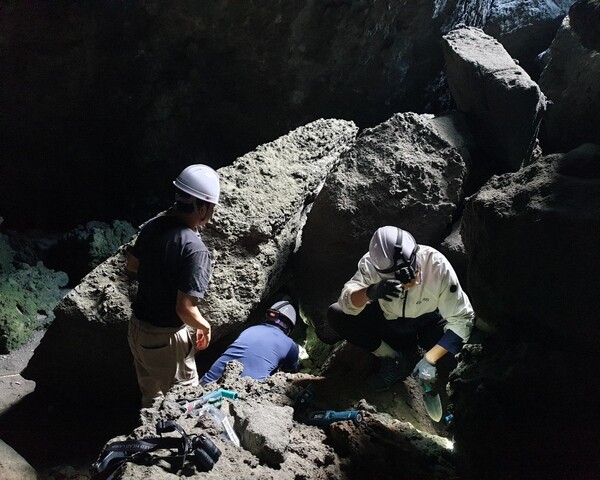Professor Lee Sang-Heon and his research team scientifically proved the cause of the extinction of Dokdo Gangchi, the marine mammal.

The fact that the cause of marine mammal Dokdo Gangchi’s extinction was because of Japan's overfishing in the Japanese colonial period had been scientifically approved for the first time.
According to the Ministry of Oceans and Fisheries on February 27th, the research team led by Lee Sang-Heon (Prof. of Oceanography, PNU) scientifically proved the cause of the Dokdo Gangchi’s extinction. The reason was overfishing, which implies the necessity of attention and protection toward marine life. The result of the research was published in the International Journal (SCI), “Journal of Marine Science and Engineering.”
It is known that more than 40,000 of Dokdo Gangchi, an extra-large sea lion, inhabited the eastern coast of Korea in the 19th century. In particular, Dokdo was called “the heaven of Gangchi” because of its abundance. However, for about eight years, from 1904, the fishing company of Japan overfished 14,000 Gangchi to make a profit with their leather. Eventually, Gangchi became extinct in the 1930s.
Professor Lee Sang-Heon's research team did not stop assuming the cause of Dokdo Gangchi’s extinction and finally proved the cause scientifically. Regarding to the background of why the professor started to study this area, Professor Lee said, “While I was studying the Pinnipedia living in East Sea through “A review on the Status of Pinnipeds in the East Sea Rim”, I thought about what research I can do about Gangchi, an animal that has already became extinct. Then, my coworkers and I started to estimate the number of Gangchi using existing historical records.”
The process was not easy. “The absence of information” was a big obstacle. Professor Lee reminded the situation, saying, “Because there was no domestic research on marine mammals, and Dokdo Gangchi became extinct before the scientific research was conducted in Korea, there was no ecological information.” Professor Lee’s team derived “the suitable population estimation modeling method” with experts in various fields based on the information that remained.
"The suitable population estimation modeling method” finds out the population change over time using organisms’ parameters and modeling equations, such as natural mortality rate, birth rate, captured-death rate. Using this method, for the Dokdo Gangchi’s population size change modeling, Professor Lee’s team used California Sea Lion’s captured population data utilizing reproduction quantity, the natural mortality rate of adults, and immatures. It is because California Sea Lions have the closest relationship with Gangchi.
Professor Lee believes that this research method, which identified the cause of Gangchi’s extinction, might also be applicable to other marine mammals whose population decreases due to “illegal poaching” or “incidental catching (the target species and other species to be caught together).” Professor Lee explained how overfishing affects ecosystem life: “If we stopped catching Gangchi in the 1910s, it would take about 120 years for the population to recover to 30,000, the population in the early 19th century. If stopped in the 1920s, it would take about 220 years. If we stopped poaching in 1910, we might have been able to see Gangchi nowadays.”
Professor Lee emphasized the necessity of finding how to coexist and preserve marine mammals inhabit in domestic waters from a lesson of the Dokdo Gangchi’s extinction. He said, “There are many cases when we directly reduce the number of marine mammals, such as doing incidental catching and environmental factors, such as global warming. Moreover, because marine mammals have the characteristics of being pregnant for a long period and then raising and nurturing their young, the population does not increase in a short time. Therefore, artificial factors including overfishing and incidental catching can have a greater impact.”
Reporter Kim Hyun-Kyoung
Translated by Lee Su-Hyun

